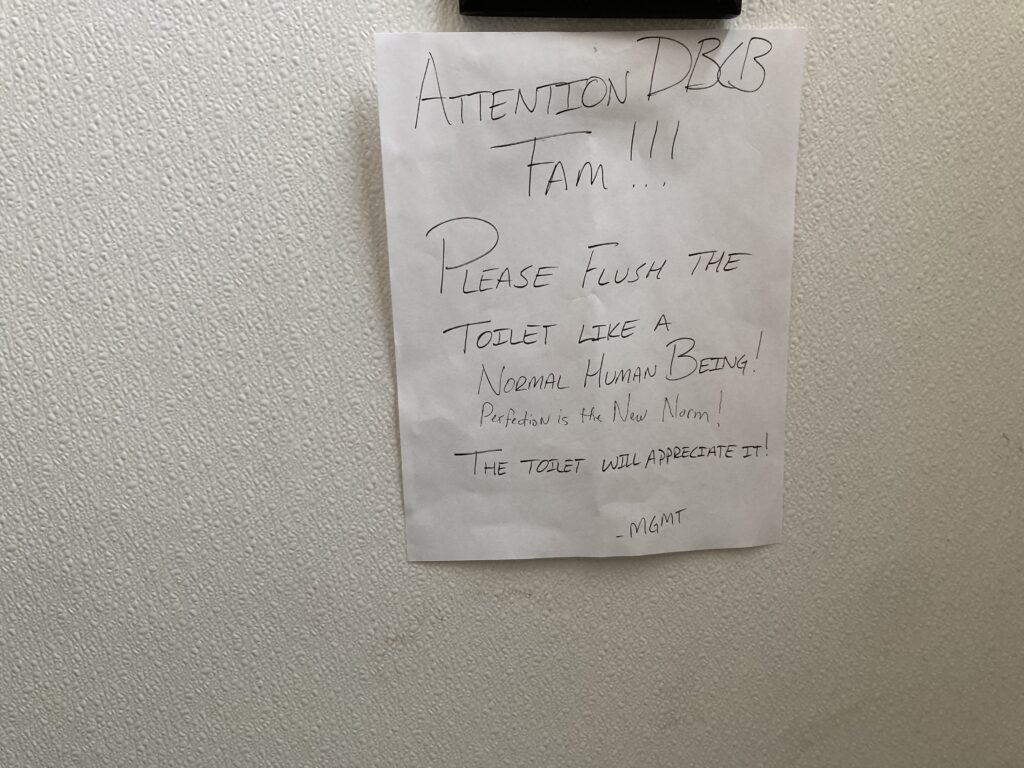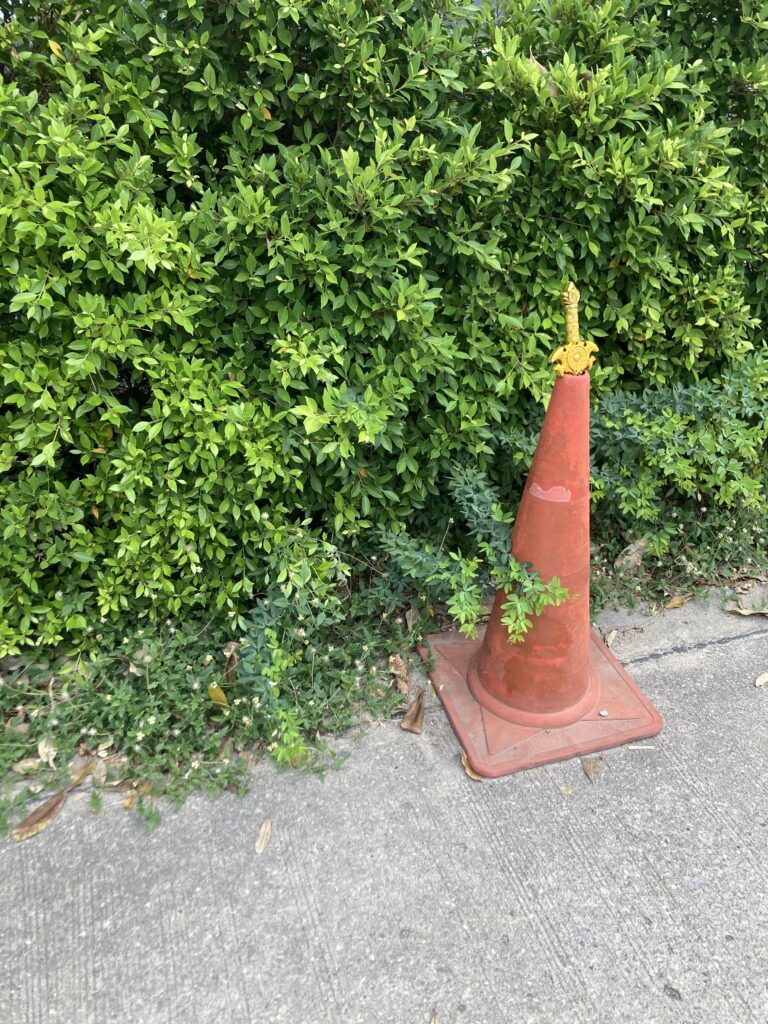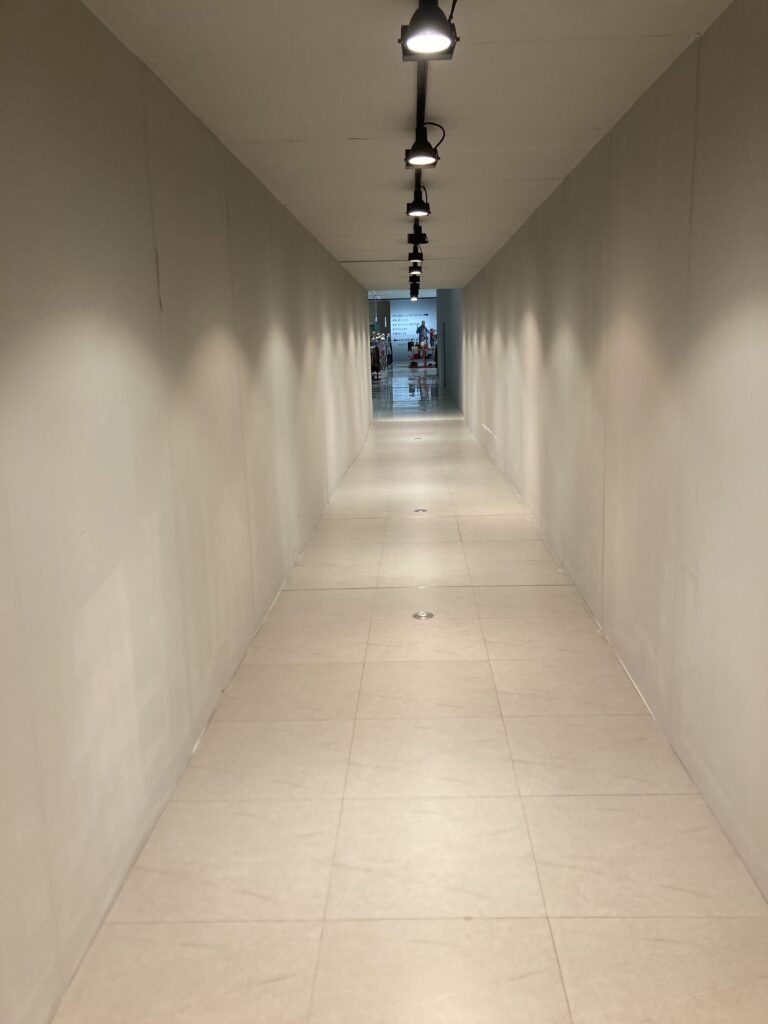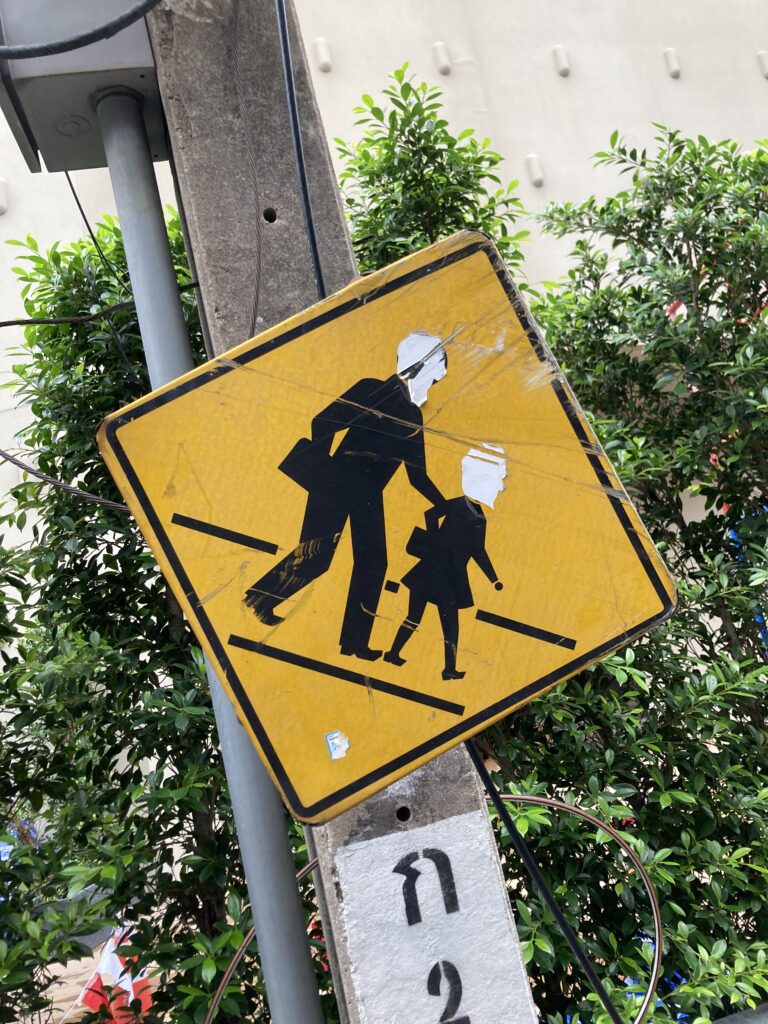
The restaurants of the Wayside are not known for the quality of their food but rather the qualities of the food. An important distinction. The food leans unique. It leans experimental, though the experiments are largely without intention. It leans inedible, sometimes, and in this case it leans so far it falls.
‘At the intersection of food and art there is ‘The Poisoned Plate,’ a restaurant that serves from a menu of natural, organic, farm-to-table, poisonous food. No, not like what you’re thinking. Not the puffer fish that has to be cut just so. Not the thistle, that loses its bite when cooked. This food is prepared such that the poison remains intact and, though it isn’t specified anywhere, the food is prepared so that the poison saturates every bite. There are those who might want to visit the restaurant as a challenge. There are those who might try to nibble the garnish and say they survived a meal at ‘The Poison Plate.’ They would likely die or suffer the chronic and life-long effects of nerve damage.
Signage says as much.
‘The Poisoned Plate’ has no license to serve food. It’s zoned as an art gallery, likely as a defense against lawsuits arising from patrons who choose to ignore the generous warnings of servers and the bold print on the menus and the waiver one must sign before sitting. The only thing that indicates one might consider eating the food is the absolute delicacy with which plates are prepared. The food looks good. It looks really good and it smells delicious. It is the enemy of the primal brain and that seems to be the thesis, if a thesis beyond profit can be said to exist.’
I order the cheapest item on the menu, which still sets me back $60. It is a side salad that consists entirely of poisonous greens, served with a vinaigrette of berries that can only be digested by a bird that shares its ecosystem. The bird is also on the menu, its flesh made poisonous by its diet of berries, but I can’t afford it and wouldn’t buy it even if I could. I roll my eyes and try to take a sip of my water but a server gasps and knocks the glass out of my hand. The water is laden with heavy metals. The broken glass, though not considered a food item, is mildly radioactive. The silverware is lead.
I pay the bill and they bring me my salad in a to-go box. Where can I throw something like this away, knowing it might kill whatever scavenges it? The salad rots in the RV for a week before I burn it in a campfire, careful not to breathe the fumes.
-traveler
‘While the novelties of the Wayside’s museums lie largely in the niche specificity, ‘The Air Museum’ stands out as a much more generalized concept brought to fruition. The reviews are negative and generally misleading, they attributing their penalties to the understandable misconception that the museum caters to flight enthusiasts. There are no airplanes at this museum, no pilot costumes to try on.
Which is not to say it lacks interaction.’
I wonder who, if anybody, enjoys the Pollution Rooms. In an ideal world, I suppose they might be a favorite field trip of local, eco-minded schools whose students, taking air from the lush forests of Vermont all of their lives, have little understanding for what polluted air might be outside of an occasional nearness to smokers (and, here, let’s consider that secondhand vaping is largely more pleasant, if not equally intrusive). I can’t believe a school would accept the liability, even if a limited exposure to the rooms would mean a fairly limited impact on health. I don’t believe the rooms can be navigated with no harm. Not having walked through them myself.
The first is a room that is open to the outside air- a non-simulation of current conditions which, according to local records, are rarely polluted and, thus, an obvious starting place. The second room simulates the mild-but-persistent pollution of an inner-city, its windows sealed shut and tinted. There is no smell and the unease I feel upon entering is largely psychological. I imagine this is the air that circulates in the RV much of the time, sucked in from the highway and poorly filtered by an engine that wants for proper maintenance.
The smell is subtle in the room after. Distinctly smokey in the next, though, it isn’t the pleasant smoke of a campfire. It’s chemical. Acrid. In the following rooms it burns my eyes.
Eight rooms in I begin to wonder just how bad it will get. In the choking atmosphere of the tenth, I attempt to turn back and find the door has locked behind me. A burning in the back of my throat leaves me little time to consider my options.
The only option is to press forward.
By room 15 the air, signs indicate, are more polluted than anywhere on earth. In this room, and in rooms following, I’m only able to find the doors because they are reliably straight ahead. I take each at a near-blind run, until I feel my hair grazing the ceiling and come to understand the rooms are getting smaller, too. Maybe air so polluted is difficult or expensive to maintain. Maybe they understand that patrons are already hunched, trying to escape, probably some instinctual understanding that smoke rises.
It doesn’t help, here.
I lose track of the rooms. The light largely disappears. I wonder, sometimes, if I’ve blacked out and my ineffective scrabbling is a pre-death delusion. Then, I hit the exit and tumble onto the grass outside and the sun is so bright that I nearly crawl back into the smoking hatch that I’ve emerged from. Even the half/half air in at the border tastes fresh.
No, they probably shouldn’t let kids inside.
The gift shop, which I visit out of morbid curiosity, is better stocked than I assumed. Branded breathing masks are available, but the curiosities include tough plastic sacks, each handheld and inflated like a balloon. They contain air from the rooms: experiential souvenirs for family that couldn’t make the trip. There are others: air from other places and times. Breathe the air from New Delhi. Sample the air from Hong Kong.
In a glass case at the front, there are sacks of celebrity breaths. Some of the contributors are long dead and the prices are quite high. I wonder if they’re sold as memorabilia or if they’re samplers like the others.
I look for some air from my hometown, but it’s too small to warrant inclusion. I wonder when I’ll breathe it again.
-traveler
I would say approximately 40% of the Wayside’s museums are really just warehouses full of highly specific junk. I suppose that’s probably true of museums in general, but your Smithsonians and your state museums put some effort into proper displays. I can be fooled into caring about half a ceramic bowl with a bronze placard and careful lighting. ‘The Museum of Retired Mascots’ is clearly uninterested in such frivolities. It’s dimly lit and dirty and something moves in my peripheries every time I lean in to read a sign.
‘Earlier editions of ‘Autumn by the Wayside’ neglected to include details regarding ‘The Museum of Retired Mascots’’ haunting. This is a regretful error. ‘The Museum of Retired Mascots,’ by its natural attributes, already very much met and exceeded the qualities necessary for inclusion in a guide such as this- it being a little known and highly niche collection of unique ephemera located off the interstate (so close, in fact, that the sound of semis on pavement is a constant inside). For this reason, it was the author’s decision to champion the spirit of ‘The Museum’ (and not the spirit, if you’ll pardon the humor).
But, the haunting of ‘The Museum of Retired Mascots,’ though incidental, is no less a part of the experience. And it has recently come to the attention of the author that there is no clear evidence that anybody has perished inside ‘The Museum’ (or on the surrounding property), suggesting that the ghost is not haunting ‘The Museum’ so much as it is haunting one of the costumes (inside of which, many deaths have occurred). It is with these considerations in mind, that the author, again, extends a heartfelt apology to those owners of previous editions who may have been, ah, taken by surprise.’
People like to speculate about which of the old mascot costumes is haunted. There are seven confirmed deaths within the costumes, all before they arrived at ‘The Museum’ (and nearly all of these deaths were the specific reason for mascot retirement). Four of the deaths occurred from heat stroke. One was an accident in a parade. One a shooting and one a stroke. That’s not to say there haven’t been others- the mascot costumes have been pulled from just about everywhere: high school and college football, local restaurant chains, failed children’s television shows.
It doesn’t help that ‘The Museum’ is not a pleasant place to be, even on a base level. There’s no climate control and it becomes an oven under even light sun. It smells like the sweat of the people who wore the costumes. Moths flutter out of eyeholes, ignoring sticky traps that are already furry with their dead.
And when, inevitably, one of the costumes shudders in the corner and begins to stalk toward me, I’ve already located the nearest exits and determined optimal escape routes- optimal, here, meaning those that won’t be pushing through more creepy costumes that may come alive at a moment’s notice. The ghost has chosen to mobilize some sort of mermaid thing with an unwieldy clam where its head should be and the stuttering movement makes the clam’s jaw clack open and closed. It hisses and whines and the air feels cooler moving around it which is, frankly, a relief from the heat.
With all the forewarning, I find myself in an awkward position: neither scared enough to run or confident enough to hold my ground. I consider that I might try to reason with the ghost- to convince it to cross over or at least become less hostile, but then I’ve always tried to take a ‘leave no trace’ philosophy into my work, and the ghost is a part of the ecosystem now, invasive or not.
When I do run, it feels a little like I’m putting on a show and the costume collapses behind me before I even reach the door. I worry that it knew my heart wasn’t really in it and immediately make it worse by faking a scream.
Outside, I breathe dust from the interstate and wonder if there’s any salvaging the situation. When I decide there isn’t, I get another call from the pit.
“How much longer do you have to keep doing this?”
-traveler
‘One may notice, on occasion, the presence of phone recycling booths in the corners of malls and department stores. Sometimes they offer the user cash for old phones. Sometimes they suggest the phones will be forwarded to some vague charity. Maybe those things happen, but they are not the core purpose of these machines. The purpose of the machines is to disincentivize the act of throwing old phones into ‘The Calling Pit.’
‘The Calling Pit’ is an outwardly mundane hole between two small hills near the border in Southern California. ‘The Pit’ is sizable, around 20’ in diameter, and it is naturally occurring, though guard rails now line its rim. ‘The Pit’ is deep and winding- the bottom, if it has one, cannot be seen from the surface.
In 2004, a visitor to ‘The Pit,’ which was even less remarkable then than it is now, accidentally dropped their new and fully charged iPhone inside. Over the course of the next day, the visitor’s contacts received strange calls and messages, including pictures of shadowed rock walls and dim sunlight, filtering in as though from a distance. Those calls and message that could be described as coherent were pleasantries (‘hello,’ ‘how are you,’ ‘what is your name’) and questions (‘how warm is it where you are,’ ‘where are you exactly,’ ‘how long will this last’). Contact ceased roughly around the time one might suspect the iPhone lost power.
Whether or not this had happened previously, the iPhone case became popular enough that others began to experiment by sinking means of contact into ‘The Calling Pit’ and waiting for contact from the entity inside. Nothing works but cellular phones and contact is only ever between the entity and contacts on an active phone- it does not seem capable of or interested in revisiting old numbers from previous devices.
Visitors to ‘The Calling Pit’ have found that, for every three questions they answer, the entity will reluctantly answer a question put to it, though it is unwilling to offer any description of what or where exactly it is. The entity only ever offers advice, and the advice tends to be targeted and insightful beyond what one might expect of something that has never felt the sun on its form. The advice is good.
Studies suggest that roughly 30% of people who engage meaningfully with ‘The Calling Pit’ are dead within a year, though no clear line of causation has been found. It may well be that only desperate people ask a hole for advice.’
I buy a burner for the occasion, spending extra for a better battery and a case. I watch on the peripheries while others drop their phones down into the dark. I do what they did- I slide the phone along the closest thing to a slope, hoping to minimize impact. It’s a violent fall, regardless.
There are rumors people have died trying to enter.
I’m the only contact on the phone. The first messages come in an hour later. Garbled.
Then a call.
A voice like a young man asks where I’m going. I check the guide and tell him I’m going to a museum where they retire the costumes of sports mascots. Before I can wonder if I need to explain what a ‘mascot’ or a ‘sport’ is, the caller hangs up.
The same voice calls back 45 minutes later and asks how I’m doing. I tell it I’m nervous, but well. The voice asks what I’m nervous about and I tell it that I don’t know who I’m talking to. Or what. I refrain from wasting a question asking.
The line remains active. I tap on the dashboard and nod to myself in the rearview mirror.
“How much longer do I have to keep doing this?”
The phone crackles and the answer comes.
-traveler
Traveling so regularly between states, it’s sometimes difficult to remember which have legalized marijuana, medical or otherwise, since I took this adventure up nearly a decade ago. I don’t smoke, myself, or I haven’t in a long time. I try not to engage in any form of substance abuse now (my self-abuse takes other forms), mostly because I don’t want to but partially because I don’t want to be stopped on the wrong side of a border with gummies I had forgotten were spiked. This means that when I arrive at ‘The Back Door,’ which is literally the back door to a pizza shop in the worst part of Denver, and a scrawny picked-skin man opens the door asks me what I want, I hesitate, for a moment, glancing at the pistol tucked loosely in his waistband and then say:
“Drugs?”
‘Buying drugs used to be fun and dangerous before capitalism was given full access to dispensaries, transforming the process into the same sterile drag that is purchasing one of a handful of the current generation’s smartphones in a mall. The modern dispensary is so far removed from the head shop- from the dealer’s shitty apartment living room- that one can hardly find any familiarity in the process at all and the sheer variety of strains and mediums encourages the middle-aged and polo-ed employees to depart on a lecture about the various pros and cons of each product, at the end of which a customer is left wondering whether such differences can actually exist between specimens or whether it’s all much of the same, branded and rebranded to create a false sense of worth. It used to there was ‘good stuff’ and ‘the stuff you bought when funds were tight.’ Now it is like a wine-tasting, all flavor and no buzz.
‘The Back Door,’ half storefront and half dinner theater, allows a glimpse into the old days.
Run out of the back of a legitimate pizza parlor, ‘The Back Door’ makes it difficult to actually purchase any of their products, encouraging their employees to act erratically- sometimes even dangerously- in order to extract the maximum amount of cash from customers (or to scare them off in the process). Visitors report varying levels of complexity after engaging in the experience. Some describe angry tweakers wielding make-shift weapons at any attempt to negotiate a better price. Other report being ‘arrested’ and ‘held in a separate facility’ for ‘several days of questioning’ before being released onto the street with no record of arrest or of the officers that interrogated them.
Some suggest that ‘The Back Door’ is a front itself, disguised in camouflage so gaudy and intense that local law enforcement is forced to assume everything is above board. Others suggest it’s only another level to the game, though repeat customers are rare or absent from the conversation entirely.’
“Drugs, huh?” The man wavers on the stoop. He looks back inside and makes meaningful eye contact with someone I can’t see. “What makes you think we’ve got drugs here?”
I reach back to pull my copy of the guide from my back pocket and the man levels his pistol at me. “What you got there?”
My mouth is dry. “A… book?”
The man spits messily to his right and wipes his mouth on skin of his shoulder, bare where his t-shirt is ripped and stained from saliva. “The autumn one?”
I nod.
“How high you want to get? We’ve got a real mellow sativa-”
“No, No!” A chubby man in a button-up appears from inside and the dealer’s posture slips from unwell and on-edge to scolded puppy. “How many times do I have to tell you, your character wouldn’t know the names.” The man turns to me and pulls a little card out of his pocket. “Sorry- we’re training this guy. This should get you 15% off a pizza in the front. Come back tomorrow if you want to try again.”
The dealer and his boss pull back into the building and ‘The Back Door’ closes. I look up reviews for the pizza place and shrug.
Better than nothing.
-traveler
Rear View Mirror
- November 2025
- October 2025
- September 2025
- August 2025
- July 2025
- June 2025
- May 2025
- April 2025
- March 2025
- February 2025
- January 2025
- December 2024
- November 2024
- October 2024
- September 2024
- August 2024
- July 2024
- June 2024
- May 2024
- April 2024
- March 2024
- February 2024
- January 2024
- December 2023
- November 2023
- October 2023
- September 2023
- August 2023
- July 2023
- June 2023
- May 2023
- April 2023
- March 2023
- February 2023
- January 2023
- December 2022
- November 2022
- October 2022
- September 2022
- August 2022
- July 2022
- June 2022
- May 2022
- April 2022
- March 2022
- February 2022
- January 2022
- December 2021
- November 2021
- October 2021
- September 2021
- August 2021
- July 2021
- June 2021
- May 2021
- April 2021
- March 2021
- February 2021
- January 2021
- December 2020
- November 2020
- October 2020
- September 2020
- August 2020
- July 2020
- June 2020
- May 2020
- April 2020
- March 2020
- February 2020
- January 2020
- December 2019
- November 2019
- October 2019
- September 2019
- August 2019
- July 2019
- June 2019
- May 2019
- April 2019
- March 2019
- February 2019
- January 2019
- December 2018
- November 2018
- October 2018
- September 2018
- August 2018
- July 2018
- June 2018
- May 2018
- April 2018
- March 2018
- February 2018
- January 2018
- December 2017
- November 2017
- October 2017
- September 2017
- August 2017
- July 2017
- June 2017
- May 2017
- April 2017
- March 2017
- February 2017
- January 2017
- December 2016
- November 2016
- October 2016
- September 2016
- August 2016




